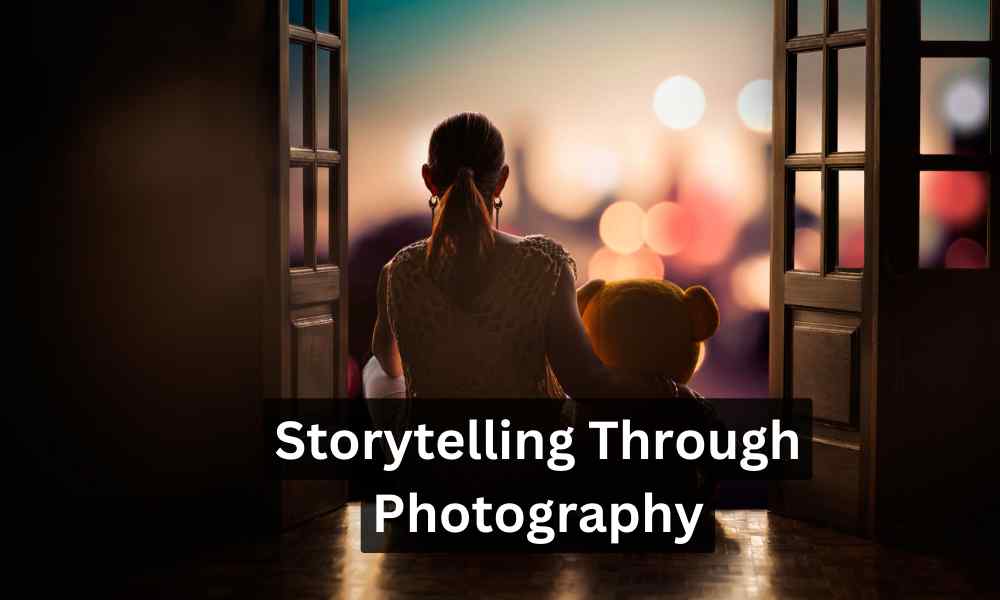Storytelling through photography transcends aesthetics, weaving narratives and emotions through powerful visuals. Plan your theme, capture decisive moments and rich details, then sequence and edit your shots for a cohesive flow. Light, depth of field, and even black and white can enhance the mood while staying open to the unexpected can add depth. With practice, you’ll transform your photos from snapshots to captivating stories:
Photography Subject Selection:
Subject selection in photography is the foundation of storytelling. It’s all about choosing the element, person, or scene that will be the heart of your image and narrative.
Here are some key aspects to consider:
Finding Inspiration: What ignites your creative spark? Is it a person’s expression, a unique architectural detail, or a dramatic landscape? Train your eye to see potential stories in everyday moments.
Composition: How will you frame your subject to tell the story? Leading lines, the rule of thirds, and negative space can all guide the viewer’s eye to your chosen focal point.
Uniqueness vs. Commonplace: Don’t be afraid to photograph ordinary objects in extraordinary ways. Conversely, a rare or unusual subject can inherently draw attention.
Light and Mood: Consider how light interacts with your subject. Dramatic shadows or soft, diffused light can set the mood and enhance the story you’re trying to tell.
Pre-visualization:
Pre-visualization in photography is the art of seeing the final image in your mind before you even raise the camera. It’s like creating a mental blueprint for your shot, allowing you to plan and capture powerful compositions. Here are some benefits of pre-visualization:
Stronger Compositions: By visualizing beforehand, you can experiment with different angles, framing, and subject placement to ensure a well-composed image.
Preparation is Key: Pre-visualization helps you decide on the right equipment for the scene, like lenses or filters, so you’re ready to capture the moment.
Efficiency and Focus: When you know what you’re looking for, you can waste less time and focus on capturing the decisive moment.
Deeper Connection:
Taking the time to envision the shot allows you to connect more deeply with the scene and capture its essence.
Photography Composition:
Composition in photography is the arrangement of elements within the frame. It’s the foundation for creating visually interesting and impactful photographs. Just like a writer uses words to tell a story, a photographer uses composition to guide the viewer’s eye and tell a visual story. Here are some key aspects of composition:
Photography Rule of Thirds:
This is a common guideline that divides the frame into a 3×3 grid. Placing important elements on the intersections or along the lines can create a more balanced and engaging composition.
Leading Lines:
Lines within the scene, like a winding road or a person’s gaze, can be used to draw the viewer’s eye into the photograph and toward your subject.
Negative Space:
The space around your subject can be just as important as the subject itself. It can create a sense of balance, emphasize the subject, and allow the viewer’s eye to rest.
Depth:
Techniques like layering elements or using selective focus can create a sense of depth and dimension in your photo, making it more visually interesting.
Balance:
A well-composed image has a sense of balance, even if it’s asymmetrical. Consider the weight and placement of elements within the frame.
By understanding and applying these compositional techniques, you can elevate your photography from simple snapshots to powerful visual stories. Remember, composition is a tool, not a rigid rule. Experiment, break the rules when it works, and most importantly, use composition to guide the viewer’s eye and tell your visual story.
Lighting:
Photography is an art form that relies heavily on light. It’s the key element that sculpts your image, reveals details, and sets the mood. Understanding the nuances of light and how to use it creatively can truly transform your photos.
The quality of light is a critical factor to consider in your photography. Harsh sunlight creates dramatic shadows, which can add depth and texture to your image. On the other hand, soft, diffused light, like on cloudy days, creates a gentler feel, perfect for creating a calm and peaceful mood. You can also use artificial lights creatively to achieve specific effects, like highlighting certain areas of your subject or creating dramatic shadows.
The direction of the light source is another essential component to consider. The way the light hits your subject will dramatically impact your image. Front light, for example, creates flat tones, which can be used to create a minimalist and modern look. Sidelight, on the other hand, highlights textures and creates depth, ideal for capturing the intricate details of your subject. Backlighting can rim your subject with light, creating a dramatic silhouette, perfect for creating moody and romantic images.
Capture Emotion:
Capturing emotion in photography is like bottling lightning – it requires focus, anticipation, and the ability to translate fleeting moments into lasting expressions. Here’s how to weave emotion into the very fabric of your photographs:
Focus on the Eyes:
They are often called “windows to the soul” for a reason. A well-captured expression in the eyes can convey a world of joy, sadness, wonder, or determination.
The Decisive Moment:
Anticipate fleeting gestures, expressions, and interactions that speak volumes. Being ready to capture these moments can make the difference between a flat image and a photograph brimming with emotion.
Body Language:
People communicate a lot through their body language. A slumped posture might suggest sadness, while open arms could express warmth and welcome. Pay attention to how your subject’s body conveys emotion.
Juxtaposition:
Placing contrasting elements within the frame can create tension and evoke emotions. For example, a lone figure dwarfed by a vast landscape can evoke feelings of solitude or insignificance.
Black and White:
Sometimes stripping away color can amplify emotions. Black and white photography can create a timeless feel and emphasize emotions through stark contrast.
Environmental Storytelling:
The environment surrounding your subject can contribute to the emotional impact of the image. A cluttered room might suggest chaos, while a serene landscape bathed in golden light could evoke a sense of peace.
Remember, emotion is subjective, but by employing these techniques and developing an eye for these emotional cues, you can capture photographs that resonate with viewers and leave a lasting impression.
Context and Detail:
Provide context and add depth to your story by including relevant details and surroundings. Wide shots establish the setting, while close-ups highlight important details and emotions, enriching the storytelling experience.
However, ensure that your edits remain true to the essence of the story and don’t compromise its authenticity.
Audience Engagement:
Finally, consider your audience and how they will engage with your story. Aim to create photos that resonate with viewers on a personal level, spark conversation, and inspire action or empathy.
Mastering the art of storytelling through photography takes time, practice, and a deep understanding of both the technical and creative aspects of photography. Stay true to your vision, keep experimenting, and let your passion for storytelling guide you on your photographic journey.
Conclusion:
Photography goes beyond capturing pretty pictures. It’s a powerful storytelling tool that allows you to weave narratives and evoke emotions through carefully chosen visuals. By mastering the art of storytelling through photography, you can transform your shots from snapshots to captivating narratives. This journey starts with pre-visualization, planning your theme, and selecting a subject that will be the heart of your story. With a strong foundation in composition and lighting, you can then capture decisive moments and impactful details that resonate with viewers.
Don’t forget the power of emotion by focusing on expressions, body language, and environmental cues, you can create photographs that leave a lasting impression. So, keep practicing, hone your skills, and use your camera to tell stories that matter.

